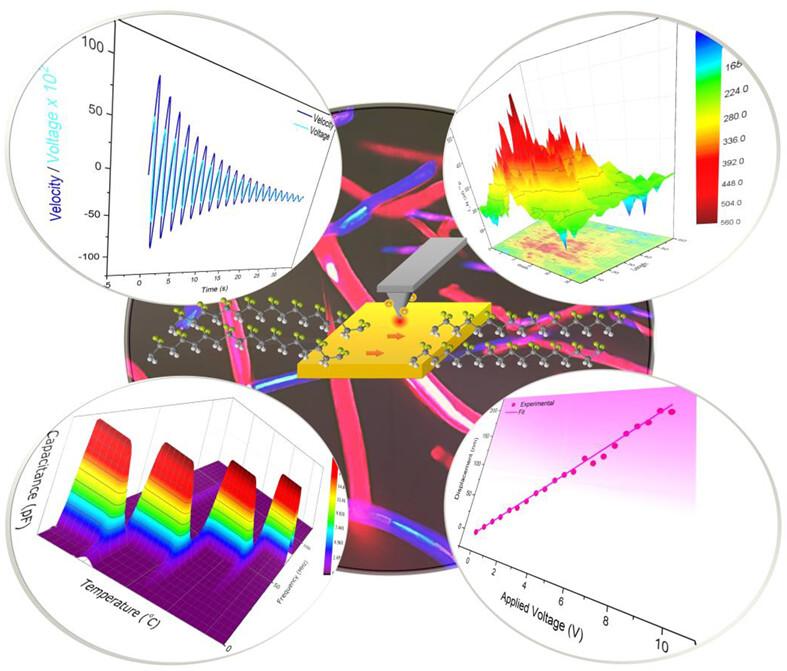求助PDF
{"title":"Piezoelectric approaches to organic polymeric materials","authors":"Mark Rigel R Ali, Szeemaine D Tigno, Eugene B Caldona","doi":"10.1002/pi.6601","DOIUrl":null,"url":null,"abstract":"<p>Piezoelectricity refers to the ability of certain materials to generate electric charges when subjected to mechanical stress or strain, and vice versa. This phenomenon has been widely studied in inorganic materials, such as quartz and ceramics, and has found numerous applications in sensing, actuation, and energy harvesting. There has been a growing interest in piezoelectricity for polymeric materials that are lightweight, flexible, and highly processable for a wide range of applications, including sensors for environmental and biomedical monitoring, energy conversion from mechanical vibrations, and actuation in soft robotics. However, characterizing the piezoelectric tendency of polymeric materials tends to be a complex and challenging process, as the effect is often weak and dependent upon various factors including material structure, processing conditions, and measurement setup. While many past and current review articles have covered theories and principles associated with piezoelectric polymers to some extent, detailed information on the corresponding experimental techniques used to measure their piezoelectric properties remains limited. This mini-review paper aims to consolidate and summarize various approaches, including quasi-static methods, optical interferometry, dielectric spectroscopy, and piezoelectric force microscopy, and to provide insights into the principles, advantages, limitations, and challenges associated with these techniques. © 2023 Society of Industrial Chemistry.</p>","PeriodicalId":20404,"journal":{"name":"Polymer International","volume":"73 3","pages":"176-190"},"PeriodicalIF":2.9000,"publicationDate":"2023-12-07","publicationTypes":"Journal Article","fieldsOfStudy":null,"isOpenAccess":false,"openAccessPdf":"","citationCount":"0","resultStr":null,"platform":"Semanticscholar","paperid":null,"PeriodicalName":"Polymer International","FirstCategoryId":"92","ListUrlMain":"https://onlinelibrary.wiley.com/doi/10.1002/pi.6601","RegionNum":4,"RegionCategory":"化学","ArticlePicture":[],"TitleCN":null,"AbstractTextCN":null,"PMCID":null,"EPubDate":"","PubModel":"","JCR":"Q2","JCRName":"POLYMER SCIENCE","Score":null,"Total":0}
引用次数: 0
引用
批量引用
Abstract
Piezoelectricity refers to the ability of certain materials to generate electric charges when subjected to mechanical stress or strain, and vice versa. This phenomenon has been widely studied in inorganic materials, such as quartz and ceramics, and has found numerous applications in sensing, actuation, and energy harvesting. There has been a growing interest in piezoelectricity for polymeric materials that are lightweight, flexible, and highly processable for a wide range of applications, including sensors for environmental and biomedical monitoring, energy conversion from mechanical vibrations, and actuation in soft robotics. However, characterizing the piezoelectric tendency of polymeric materials tends to be a complex and challenging process, as the effect is often weak and dependent upon various factors including material structure, processing conditions, and measurement setup. While many past and current review articles have covered theories and principles associated with piezoelectric polymers to some extent, detailed information on the corresponding experimental techniques used to measure their piezoelectric properties remains limited. This mini-review paper aims to consolidate and summarize various approaches, including quasi-static methods, optical interferometry, dielectric spectroscopy, and piezoelectric force microscopy, and to provide insights into the principles, advantages, limitations, and challenges associated with these techniques. © 2023 Society of Industrial Chemistry.


 求助内容:
求助内容: 应助结果提醒方式:
应助结果提醒方式:


